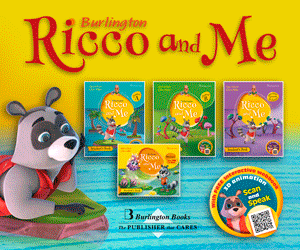Some English teachers teach English language only, and some teach English literature only, but many (for example in secondary schools around the world) probably have to cover both. Why would these groups want to bring Dickens into their classrooms? Well that’s obvious for literature teachers. Dickens is one of the best known writers of English literature and many of his novels and the characters in them are familiar around the world, through translation or in the original. The novels are extremely good stories, with such fascinating characters, that they have remained best sellers since the middle of the 18th century. What is more, so many of his themes and the issues he wrote about stay with us today, so Dickens still speaks to us about poverty, about crime and punishment, about education – about our world!
For teachers of language, there may be a thick syllabus to get through, and literature may seem too much of a luxury, not closely linked to the students’ immediate needs. However, it is authentic material, as read by many native speakers, and it is a window into the target culture as well as the target language, and so many learners can find it highly motivating. Furthermore, if you can encourage your students to read extensively, you will have done a very good thing in helping their language development as research suggests that extensive reading benefits vocabulary, grammar, reading and writing.
There is one obvious problem in using Dickens with English learners (and with most texts that were written for native speakers of a language when read by speakers of other languages, especially if written some time ago); the language level makes them too difficult for many learners. The lesson plans on this site use original Dickens texts, not simplified ones, and so are mostly (but not only) targeted at learners who have as a minimum a strong intermediate level of English, and some need an upper-intermediate level.
The plans try to minimise this problem by following the classic ‘shape’ of a reading skills lesson as understood by a language teacher. In this sort of lesson the focus is on the skill of reading in the target language rather than on language development, but the teacher is aware of the language difficulties that the student will face. The first way (s)he helps the student overcome this difficulty is through a pre-reading stage, in which the class will focus on the topic of the reading, possibly sharing what they already know, and maybe making predictions about what will be in the text. If the subject matter is familiar to the students and they feel relaxed about that, that should free them up to concentrate more on any language difficulties as they read. Also, still in the pre-reading stage, the teacher may pre-teach some vocabulary, choosing some key words that would otherwise make the reading too hard.
After the ‘pre-reading’ comes ‘while-reading’, and here the classic ‘shape’ says that students should have a general, gist reading task before they are asked to do any detailed exercises. They should be allowed to read the text individually, silently, and pushed to read as quickly as possible for this general understanding. Detailed reading exercises can follow, once students are comfortable with the overall meaning. Finally comes the ‘post-reading’ stage, and this is a chance for the students to practise using the target language in some sort of fluency work, or writing (and writing can be for fluency as well as for accuracy, remember). Hopefully by now the class is very familiar with the topic, and has ideas about it, and vocabulary with which to work. These plans include debates and discussions as extension, and also performance, as the chance to practise pronunciation (stress and intonation to express meaning) is an important part of fluency work.
All of the lesson plans follow this shape. A teacher still has to adapt any plan to suit his or her students, of course, but we recommend that you do include pre-reading, while-reading and post-reading stages, and that the while-reading includes a gist reading before any detailed study of the text.
These steps are designed to help the students’ comprehension. If you feel that the level of the text is still too difficult, you could pre-teach more vocabulary (but if you do too much it could become a language input lesson rather than a reading lesson) or simplify the passage by replacing difficult words, phrases or sentences with simpler ones, or by adding to the text, giving more context to help with understanding of any word. Of course, if you do that, you no longer have the original text, and so you may decide to use a graded reader instead, as then the simplification has already been done for you. Do any of this, but do not give Dickens passages to students who simply cannot cope with them. This is true for any reading, but we would hate for you to put your students off a writer they may come to love when their English has advanced further.
In these lessons, you will find a variety of texts (narrative, dialogue, description of place, of people, etc) and a variety of exercises used to exploit them. We hope you and your students have fun with them, and your students learn, whether they are attending language lessons, literature lessons or, simply, English lessons!
By Richard Lunt





